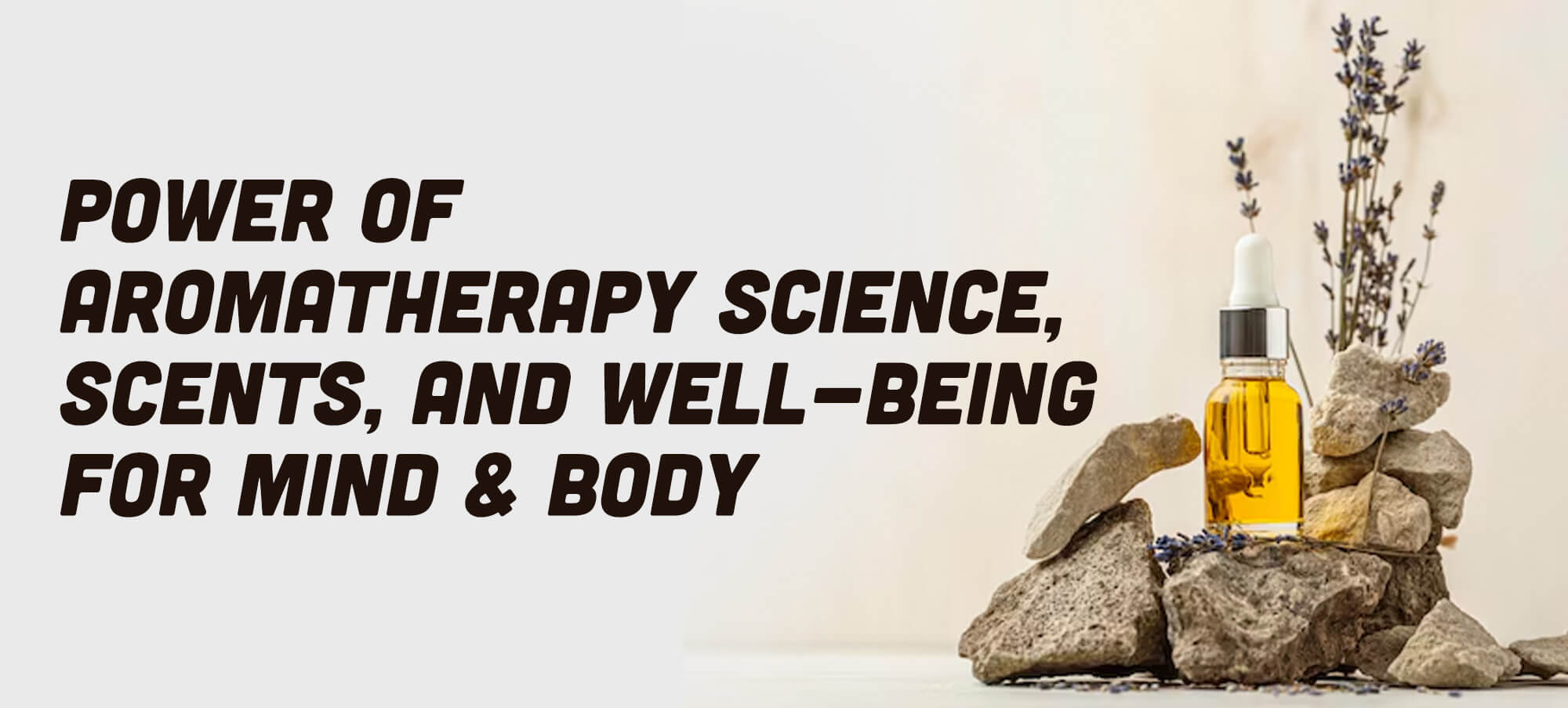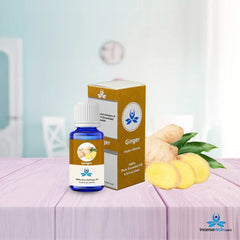
What is Aromatherapy? Science Behind the Use of Essential Oils for Body & Mind
Aromatherapy, a therapeutic practice using essential oils and plant-based compounds, has captivated minds worldwide with its ability to rejuvenate the body and mind. At its core, aromatherapy aims to enhance well-being through natural fragrances and has deep roots in both science and tradition. In this guide, we’ll explore how aromatherapy works, how scents interact with our brain’s limbic system, and the varied applications of essential oils in daily life.
What is Aromatherapy?
Aromatherapy involves the use of essential oils and aromatic compounds extracted from plants to enhance physical, emotional, and spiritual well-being. These oils are highly concentrated extracts obtained by steaming or pressing fragrant plant parts such as flowers, leaves, bark, or fruit. With their therapeutic properties, essential oils are believed to impact both the body and the mind through inhalation, topical application, and even ingestion in some traditional practices.
The National Association for Holistic Aromatherapy (NAHA) defines aromatherapy as “the therapeutic application or medicinal use of aromatic substances for holistic healing.” Aromatherapists and practitioners use specific oils for targeted effects, from stress relief to enhanced focus, making it a powerful tool for complementary medicine.

The Science Behind Aromatherapy
Aromatherapy works through two main pathways: the olfactory & respiratory systems (sense of smell) and skin absorption.
When you inhale an essential oil, it activates the olfactory receptors in the nose, which send signals to the brain’s limbic system—a part of the brain involved in emotions, memories, and hormonal responses. Inhalation doesn’t just affect our olfactory system; it also engages our respiratory system. When we breathe in essential oils, the tiny, aromatic molecules travel through the nasal passages and down into the lungs. In the lungs, these molecules interact with the alveoli — tiny air sacs where oxygen exchange occurs. The essential oil molecules pass through the alveolar membrane and enter the bloodstream, where they’re distributed throughout the body.

Essential oils can also be absorbed through the skin, particularly when used with carrier oils during massage or in skincare products. The skin, although it acts as a barrier, is permeable to small, fat-soluble molecules like those found in essential oils. When essential oils are massaged into the skin, they penetrate the layers and enter the bloodstream.
The effectiveness of skin absorption is higher in areas where the skin has sweat glands and hair follicles, which help facilitate the absorption process. Once in the bloodstream, the active compounds circulate through the body, producing therapeutic effects.

The combination of these three pathways — olfactory, respiratory, and skin absorption — highlights the multi-dimensional nature of aromatherapy. Aromatherapy oils engage the body on multiple levels, promoting emotional balance, physiological relief, and a deep sense of well-being. Though not a cure-all, aromatherapy is increasingly respected as a supportive therapy, especially in managing pain, anxiety, and insomnia.
How Do Scents Affect the Limbic System?
The limbic system, known as the brain’s emotional center, plays a crucial role in how we process emotions and memories. Scents are powerful triggers for the limbic system, which is why inhaling essential oils can quickly affect our mood and stress levels.
When inhaled, essential oils stimulate olfactory receptors that transmit signals to the olfactory bulb and limbic system. This process can activate the release of neurotransmitters such as serotonin, dopamine, and endorphins, helping to reduce stress, uplift mood, and create a sense of calm. Lavender, for instance, is renowned for its calming effects, while citrus scents are known for their energizing impact on the mind.
Do Essential Oils Relieve Chest Congestion and Soothe Cold Symptoms?
Yes, certain essential oils can relieve chest congestion and alleviate cold symptoms. Oils like eucalyptus, peppermint, and tea tree have natural decongestant properties that can help clear nasal passages and improve breathing. Eucalyptus oil, rich in eucalyptol, can ease congestion when inhaled, breaking up mucus and soothing irritated airways.
Inhalation methods like steam inhalation work effectively here. Adding a few drops of eucalyptus or peppermint oil to a bowl of hot water, and inhaling the steam can provide immediate relief. These oils contain antimicrobial compounds that may also help reduce symptoms of infections by clearing the respiratory tract.
How Does an Aromatherapy Massage Comfort Us?
Essential oil massages are known to relieve muscle tension, reduce stress, and promote relaxation. When massaged into the skin with a carrier oil (like coconut, almond, or jojoba oil), essential oils can penetrate the epidermis, reaching the dermis where blood vessels and hair follicles help transport the oils deeper into the body.
This absorption allows the active compounds in essential oils to enter the bloodstream, which can aid in muscle relaxation, enhance blood circulation, and provide an overall sense of calm. For example, lavender or chamomile oils are frequently used in aromatherapy massage to promote relaxation, while oils like ginger or rosemary are applied to reduce inflammation and alleviate pain.
Practicing Aromatherapy at Home
You don’t need a spa visit to benefit from aromatherapy; with a few tools and the right essential oils, you can create a relaxing and therapeutic atmosphere right at home. Below are some popular methods to enjoy aromatherapy, along with specific essential oils recommended for each technique.
Aromatherapy Methods and Essential Oils to Use
Diffusion
Diffusion is one of the most popular ways to disperse essential oils into the air, creating a calming or invigorating atmosphere throughout a room. Ultrasonic diffusers are particularly effective as aromatherapy diffusers as they emit a fine mist of water and essential oil particles without heating the oil, preserving its therapeutic properties. For relaxation, try lavender essential oil, known for its calming effects and ability to ease stress and promote sleep. For an energy boost, use peppermint oil, which has a fresh, minty scent that awakens the senses. If you’re looking to clear your airways, eucalyptus oil is excellent for respiratory support, helping relieve congestion and open the sinuses.
Steam Inhalation
Steam inhalation is another effective method, especially beneficial for clearing congestion or soothing respiratory issues. To practice steam inhalation, add a few drops of aromatherapy oil to hot water, lean over the bowl with a towel over your head, and breathe deeply. Peppermint oil is perfect for sinus relief, helping to open nasal passages and soothe headaches. Eucalyptus oil provides strong decongestant effects, while lemon oil offers an uplifting citrus aroma that helps relieve stress and promotes mental clarity.
Topical Application
Topical application involves applying diluted essential oils directly to the skin, typically with a carrier oil to prevent irritation. This method allows essential oils to penetrate the skin, offering localized benefits. Tea tree oil is ideal for skin health due to its antibacterial and anti-inflammatory properties, helping treat acne and minor skin irritations. Chamomile oil provides gentle relief for inflamed or sensitive skin. If you’re targeting muscle pain, Rosemary oil offers a warming sensation that promotes circulation and helps relieve soreness.
Massage
Aromatherapy massage combines the soothing effects of touch with the therapeutic properties of essential oils, creating a deeply relaxing experience. Massage oils contain essential oils like lavender to relax muscles, ease stress, and improve sleep quality. For a warming effect, try ginger oil, known to soothe aching joints and muscles, making it perfect for massages that target tension and soreness. Clary sage oil is another great choice, known for easing muscle tension and balancing emotions, which can be particularly helpful for relieving menstrual discomfort.
Candles and Incense Sticks
Aromatherapy candles and incense sticks provide a simple way to enjoy essential oils while enhancing the ambiance of a room. They’re perfect for meditation, relaxation, or simply creating a soothing space. Sandalwood is an excellent choice for meditation, with its grounding, woody aroma that fosters a calm and focused state of mind. For a sense of stability and grounding, patchouli has an earthy aroma that’s ideal for unwinding. Frankincense oil is also popular in spiritual practices; its rich, resinous scent uplifts the spirit, making it perfect for creating a peaceful environment during reflection or meditation.
Bathing
Adding aromatherapy oils to your bathwater is a luxurious way to unwind, relax muscles, and nourish the skin. Lavender is a classic choice, as it promotes deep relaxation and eases tension, making it ideal for a bedtime bath. For an invigorating bath, consider peppermint or eucalyptus, which provide a refreshing aroma that can help relieve muscle tension and invigorate the senses.
Roll-Ons
Roll-on essential oils are portable and convenient, allowing you to enjoy the benefits of aromatherapy on the go. Roll-ons are usually pre-diluted, so you can apply them directly to pulse points for immediate relief from stress or a quick mood boost. For a calming effect, cedarwood is an excellent choice, providing a warm, woodsy scent that can ease anxiety. Bergamot is another fantastic roll-on option, with its citrusy aroma offering a refreshing and uplifting effect that can help relieve stress and boost your mood. Ylang-ylang roll-on perfume offers a sweet floral scent known for reducing stress and enhancing a romantic atmosphere.
Incorporating these aromatherapy methods into your daily routine can bring about various mental and physical health benefits. With the best aromatherapy oils tailored to each application, you can create a versatile, at-home wellness toolkit that supports relaxation, energy, and overall well-being.
A Sniff from the Past
The history of aromatherapy oils traces back thousands of years, with ancient civilizations including Egypt, India, and China pioneering their use. Egyptians used oils for mummification, rituals, and healing as far back as 4500 BC. In India, essential oils played a major role in Ayurvedic medicine, with practices still used today. The Greeks and Romans used oils for medicinal purposes, while China documented the benefits of aromatic herbs in traditional medicine.
The spiritual, cosmetic, and medicinal use of different oils paved the way for modern aromatherapy, highlighting a longstanding belief in the healing power of scents and natural extracts.

Aromatherapy Oils Today
Today, aromatherapy has evolved into a holistic wellness practice accessible to everyone, not just reserved for spas or exclusive health centers. Aromatherapy oils have become a staple for home wellness, stress relief, and complementary therapy. By understanding the science behind these aromatic compounds, we can better harness their potential to rejuvenate both mind and body.
Whether diffusing oils for a calming ambiance, using roll-on perfumes for daily stress relief, or enjoying an essential oil-infused massage, aromatherapy is a simple yet powerful way to support our well-being. Through this ancient practice, we can reconnect with nature’s most potent elements to bring harmony and balance into our lives.










Leave a comment
This site is protected by hCaptcha and the hCaptcha Privacy Policy and Terms of Service apply.